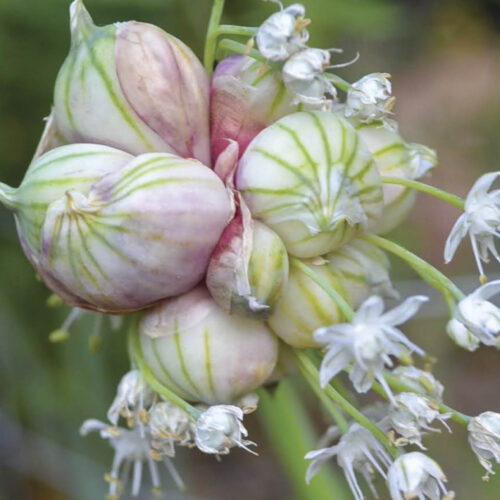Get going with garlic
2012-03-13T22:33:13+11:00
Garlic is a winter crop in most areas, and if you live in warmer parts of the country, it pays to start planting now, says PHIL DUDMAN
There’s an old rule with garlic, plant on the shortest day of the year and harvest on the longest day. It works well for gardeners in temperate to cool climates where you can plant in winter. Where I live in the subtropics, I like to plant in March to early April to make the most of the coolest months of the year – garlic needs at least six months or so of mild temperatures to form plump, juicy (pungent) bulbs. In cold areas where summers are reasonably mild, many gardeners plant in early spring.
It’s vital that you prepare the soil well. I’ve dug mine over to a good spades depth to loosen it up and I’ve added a bucket or two of compost per square metre. Garlic hates wet feet, and I’ve got a clay soil, so I’m mounding the soil in rows about 40cm wide to improve the drainage.
I prefer to buy my planting stocking from organic farmers at my local farmers market. That way I know it’s a proven variety for local conditions. They don’t always have it when I want it, so the next best option for me is online shopping, where you can discover more garlic varieties than you ever thought existed, and plenty of certified organic and biodynamic stock.
All you need to do is break up the bulbs into individual cloves and then plant them – pointy end up – into a series of holes around 15cm apart and 5 cm deep. The pointy end is where the shoots will form. Once that’s done, give them a good watering and cover the soil with a thin layer of mulch to hold in the moisture and keep the weeds at bay. It’s that simple.
I have found that freshly planted cloves are very prone to rot, so I tend to hold off on giving them too much water in the early stages – just enough to keep them interested – but once they get going, I make sure they get a regular drink to keep the ground moist and a light feed with an organic fertiliser once every six weeks to keep them actively growing. About a month before harvest (6-7 months), it’s a good idea to wind back the growth rate by reducing the watering. This hardens them up so they store better. The time to pull them up is when the leaves are about 90% yellow brown. It’s a good idea to leave them out in the sun for a few days to dry out then hang them under cover in a cool airy spot. Plaiting them looks great, and saves hanging space.





